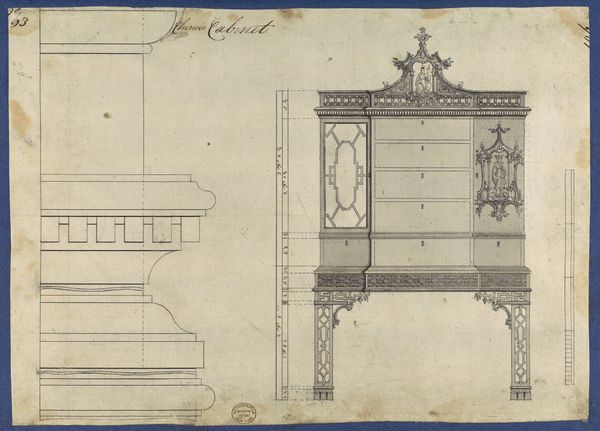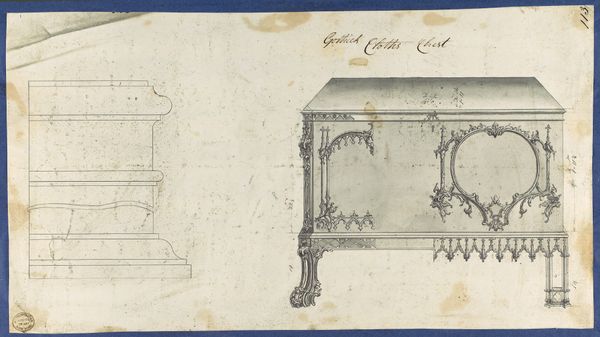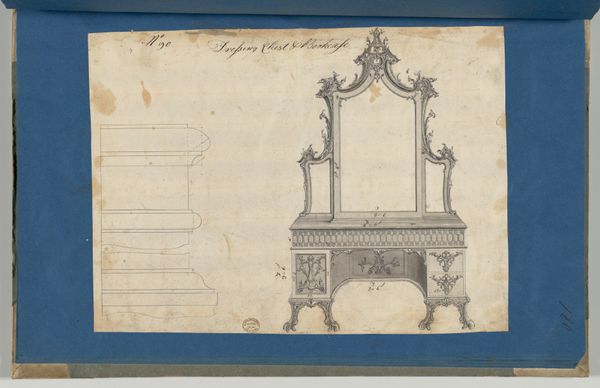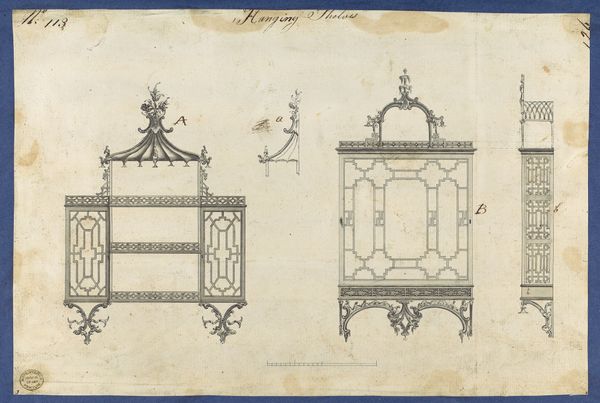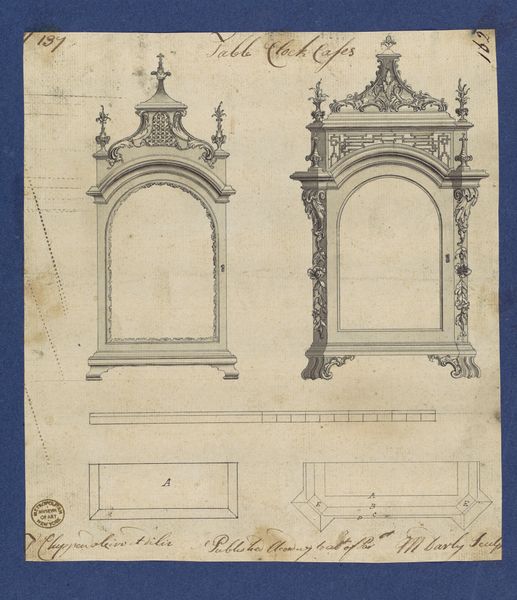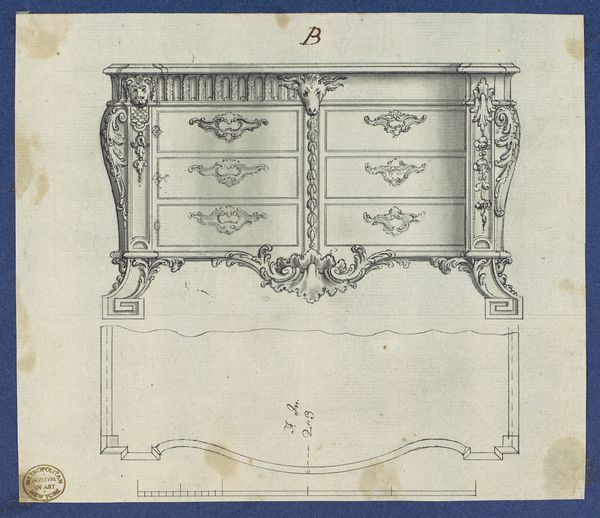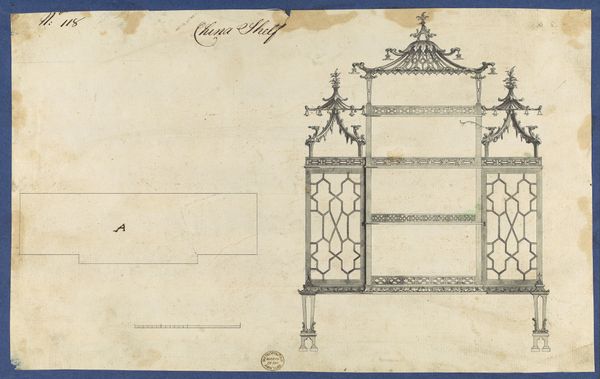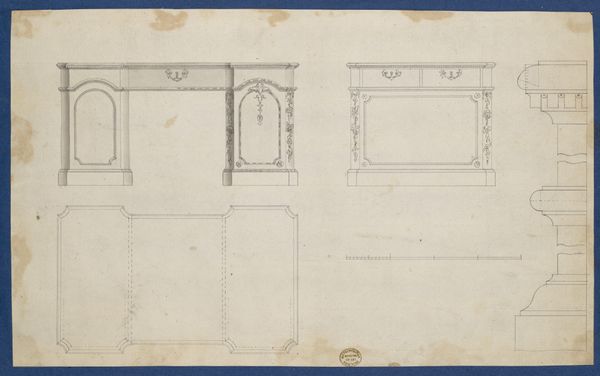![Gothick [Gothic] Cabinet, from Chippendale Drawings, Vol. II by Thomas Chippendale](/_next/image?url=https%3A%2F%2Fd2w8kbdekdi1gv.cloudfront.net%2FeyJidWNrZXQiOiAiYXJ0ZXJhLWltYWdlcy1idWNrZXQiLCAia2V5IjogImFydHdvcmtzLzU4ZjE3MjgwLTU2ZWItNGQxMC1iOWQzLTYxMDJlNDVlZmY5ZS81OGYxNzI4MC01NmViLTRkMTAtYjlkMy02MTAyZTQ1ZWZmOWVfZnVsbC5qcGciLCAiZWRpdHMiOiB7InJlc2l6ZSI6IHsid2lkdGgiOiAxOTIwLCAiaGVpZ2h0IjogMTkyMCwgImZpdCI6ICJpbnNpZGUifX19&w=3840&q=75)
Gothick [Gothic] Cabinet, from Chippendale Drawings, Vol. II 1754
0:00
0:00
drawing, print, wood
#
drawing
# print
#
form
#
geometric
#
line
#
wood
#
history-painting
#
academic-art
#
decorative-art
Dimensions: sheet: 8 1/2 x 12 1/8 in. (21.7 x 30.7 cm)
Copyright: Public Domain
Curator: This drawing presents Thomas Chippendale's design for a "Gothick Cabinet" dated to 1754, currently residing at the Metropolitan Museum of Art. What strikes you first about this design, Editor? Editor: Immediately, a sense of whimsy! Those elaborate, almost theatrical flourishes decorating the cabinet… they feel less about practicality and more about making a statement. The pointed arches, too; are those drawing direct lines to medieval cathedrals? Curator: Precisely! The 'Gothick' style, particularly in furniture, represented a fascination with the past, but not in a historically accurate way. Chippendale’s workshop would have been adept at working with mahogany or walnut, employing carving, joinery, and potentially gilding techniques to realize such designs for wealthy patrons seeking status symbols. Editor: Yes, I see the status there – and I suppose the ornament reflects some desire for ancestral projection, though the execution here appears a little loose! It’s almost playful. Are we sure Chippendale designed every single detail or had assistance from the staff? What would be displayed inside this cabinet, signaling status? Curator: It’s likely Chippendale oversaw the design process while skilled artisans executed it. High-status collectibles—porcelain, silver, or even books—would grace its shelves. Consider the wood, and the social context: each involved colonial exploitation; we must address these dynamics when thinking about production and consumption in that era. Editor: That certainly brings a sharper focus! Knowing where the raw materials originated and who labored to produce such pieces casts a very different shadow over its decorative elements. It makes me question the whole appeal to “Gothick” themes. Does it borrow that look superficially without reckoning with the real history embedded there? Curator: That's a vital observation! Its revival of Gothic motifs is not necessarily about deep understanding, but rather aesthetic taste making a very distinct gesture during the mid-18th century. Editor: Fascinating; it's both beautiful and problematic then. Curator: Indeed, a beautiful design fraught with complex narratives regarding materiality and symbolism.
Comments
No comments
Be the first to comment and join the conversation on the ultimate creative platform.


